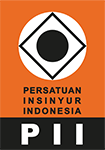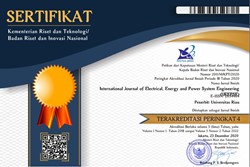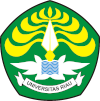MAIN MENU
Author Guidelines
Before prepare and submit article manuscripts, please note that author(s) is discouraged from withdrawing submitted papers after it is in the publication process (review, copyedit, layout, etc.,). During the time, IJEEPSE had spent valuable resources besides time expended in the process. Please prepare your manuscript before submission, using these guidelines and the article template provided.
Format
Article files should be presented in Microsoft Word format.
Article Length
Articles should range from 10-16 pages, including references. A maximum of 4 pages long appendices are allowed.
Article Title
A title of 10 words maximum should be provided.
Author Details and Authorship
All contributing authors’ names should be added, and their names arranged in the correct order for publication. A correct email address should be supplied only by the corresponding author. The full name of each author must be found in the exact format they should appear for publication, including or exclude any middle names or initials as required. The affiliation of each contributing author should be correct on their individual author name.
The criteria of authorship are as follows; Substantial contributions to the conception or design of the work; or the acquisition, analysis, or interpretation of data for the work; Drafting the work or revising it critically for important intellectual content; Final approval of the version to be published; Agreement to be accountable for all aspects of the work in ensuring that questions related to the accuracy or integrity of any part of the work are appropriately investigated and resolved.
Structured Abstract
Authors must supply a structured abstract in their submission, which includes:
Purpose
Design/methods/approach
Findings/results
Conclusions
A maximum of 200 words in total excluding keywords. It needs to be in English regardless of the articles content's languages.
Keywords
Authors should provide appropriate and short keywords that encapsulate the principal topics of the paper. The maximum number of keywords is 5 (five) words.
Article Organization
The body of articles should be organized (at least) into the IMRaD structure as follow;
The introduction section provides adequate background or context (problem and its significance) of the study. The subject should not be written extensively. It is expected that the rationale or purpose of the study (gap analysis), the object in general and specific, and hypothesis (if any) should be expressed clearly. Present a clear "state of the art" in the subject, which discussed literature and theoretical concepts behind it. A concise general background may be incorporated into the article. Present at least 5 (five) of recent related work to support the novelty of the research.
Methods in part provides sufficient details to allow the work to be reproduced by an independent researcher. Methods that are already published should be summarized and indicated by a reference. If quoting directly from a previously published method, use quotation marks and also cite the source. Any modifications to existing methods should also be described. Indicate the participants observed, including demographic data, number of respondents, the rationale of respondents selection, etc. Describe the design of the experiment, such as the experimental procedures, surveys, interviews, observation characteristics, etc. Write the complete research procedure. Be sure that explanations made in the article will allow other researchers to reproduce the work, or make future work out of it.
Results and discussions. Writing results in a logical sequence. Results with important findings should be present first. When presenting results in a table or figure, do not repeat all those contents in the text. Present only the summary of the text. Describe only new and important aspects of the study. Do not repeat all information from the results section or any part above. Present limitations of the study. Writing the issues that are new or unsolved, for future research. This section consists of information on What/How the presented data were produced, no raw data should be present in the article. The produced data are presented in tables, or figures with an explanation of what is the result/findings of the work. The section will be required to address connections between findings and basic concepts or hypothesis made earlier. Authors should also express whether any arguments were needed relating to other work from other researchers. Writing implications made by the work related to theoretical or applications.
Conclusions part. The conclusion should be linked to the title and objectives of the study. Do not make statements not adequately supported by your findings. Writing the improvements made to the field or science in general. Do not make further discussions, repeat the abstract, not only list the results of research results. Do not use bullet points, use paragraphed sentences instead.
Biographies and acknowledgments. Those who contribute but do not meet all criteria for authorship should not be listed as authors, but they should be acknowledged at the end of the text. Only the names of the persons but not their role should be written under the acknowledgment part. Authors must declare all sources of external research funding in their article and a statement to this effect should appear in the acknowledgements section.
Authors who wish to include these items should save them together in the MS Word file to be uploaded with the submission. If they are to be included, a brief professional biography of 100 words maximum should be supplied for each named author.
Article Categories
Authors must categorize their paper as part of the article information. The category which most closely describes their paper should be selected from the list below.
Research paper. This category covers papers which report on any type of research carried out by the authors. The research may involve the construction or testing of a model or framework, action research, testing of data, market research or surveys, empirical, scientific or laboratory research.
Technical paper. Describes and evaluates technical products, processes or services.
Conceptual paper. These papers will not be based on research but will develop hypotheses. The papers are likely to be discursive and will cover philosophical discussions and comparative studies of others' work and thinking.
Case study reports. Case studies describe actual interventions or experience within organizations. They may well be subjective and will not generally report on research. A description of a legal case or a hypothetical case study used as a teaching exercise would also fit into this category.
Headings
Headings must be concise, with a clear indication of the distinction between the hierarchy of headings. The format is given in the article's template.
Notes/Endnotes
Notes or Endnotes should be utilized only if absolutely necessary and must be identified in the text by consecutive numbers, enclosed in square brackets and listed at the end of the article.
Figures
All figures (charts, diagrams, line drawings, web pages/screenshots, and photographic images) should be submitted in electronic form. All figures should be of high quality, legible and numbered consecutively with Arabic numerals. Graphics may be provided in color to facilitate their appearance on the online database. Figures created in MS Word, MS PowerPoint, MS Excel should be provided in their native formats. Electronic figures made in other applications should be copied from the origination software and pasted into MS Word template document. Photographic images should be included in the main body of the article and of high quality.
Tables
Tables should be typed and included in the main body of the article. The position of tables should be inserted in the text as close to the point of reference as possible. Ensure that any superscripts or asterisks are shown next to the relevant items and have corresponding explanations displayed as footnotes to the table, figure or plate.
References
IJEEPSE prefer articles which refer mainly to journal articles, research reports, and conference proceedings, rather than rely heavily on textbooks or handbooks to demonstrate articles' novelty in the subject discussed. Use of Mendeley as a tool in referencing is preferable and encouraged. References should be carefully checked for completeness, accuracy, and consistency.
Author(s) should cite publications in the text following the IEEE citation style.
Please download the article template by clicking on this hyperlink or click the pop-out icon on the top right-hand corner of the preview below.


















